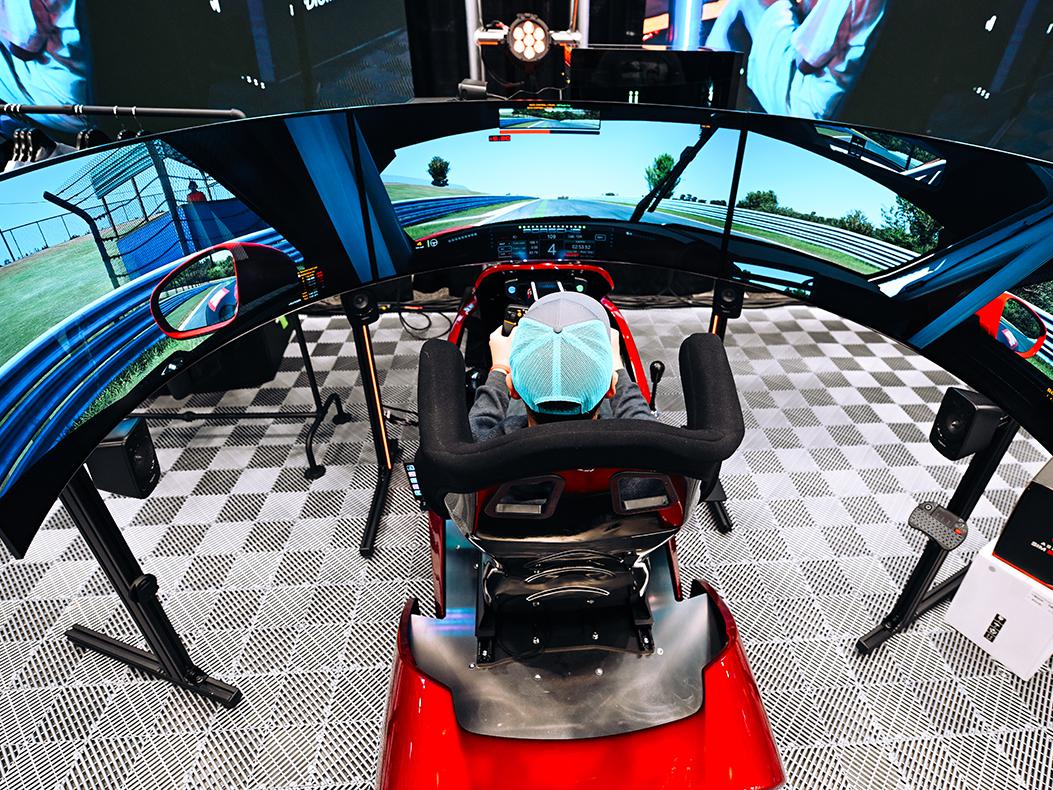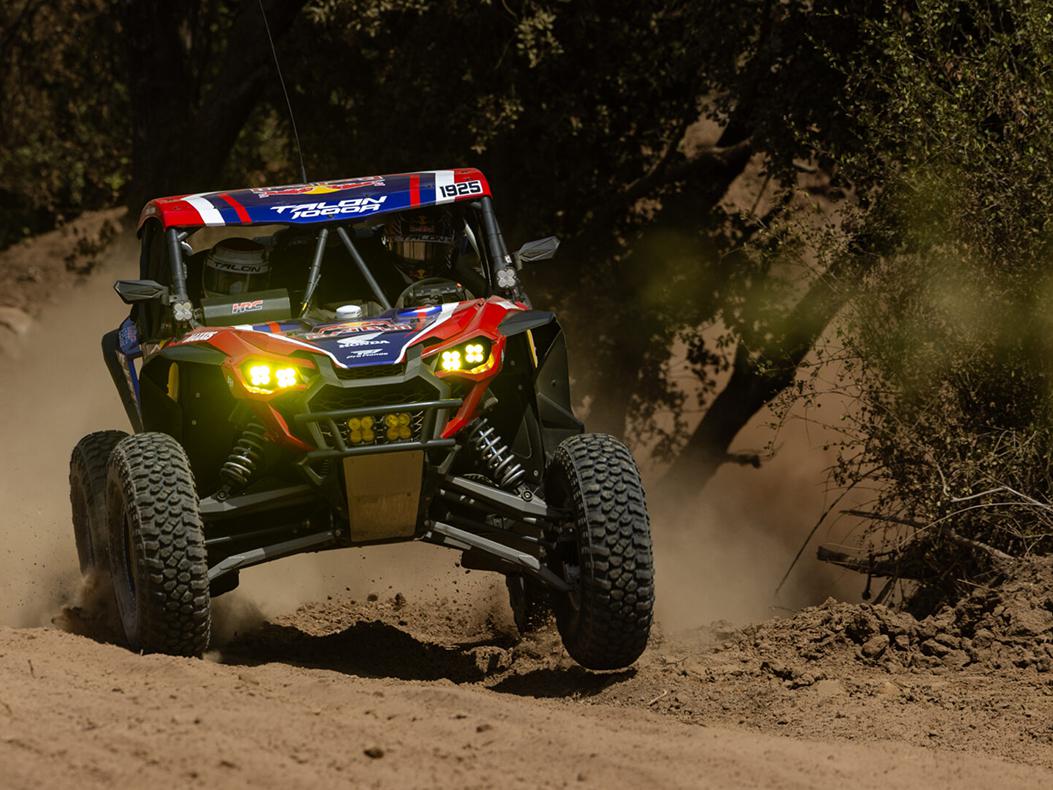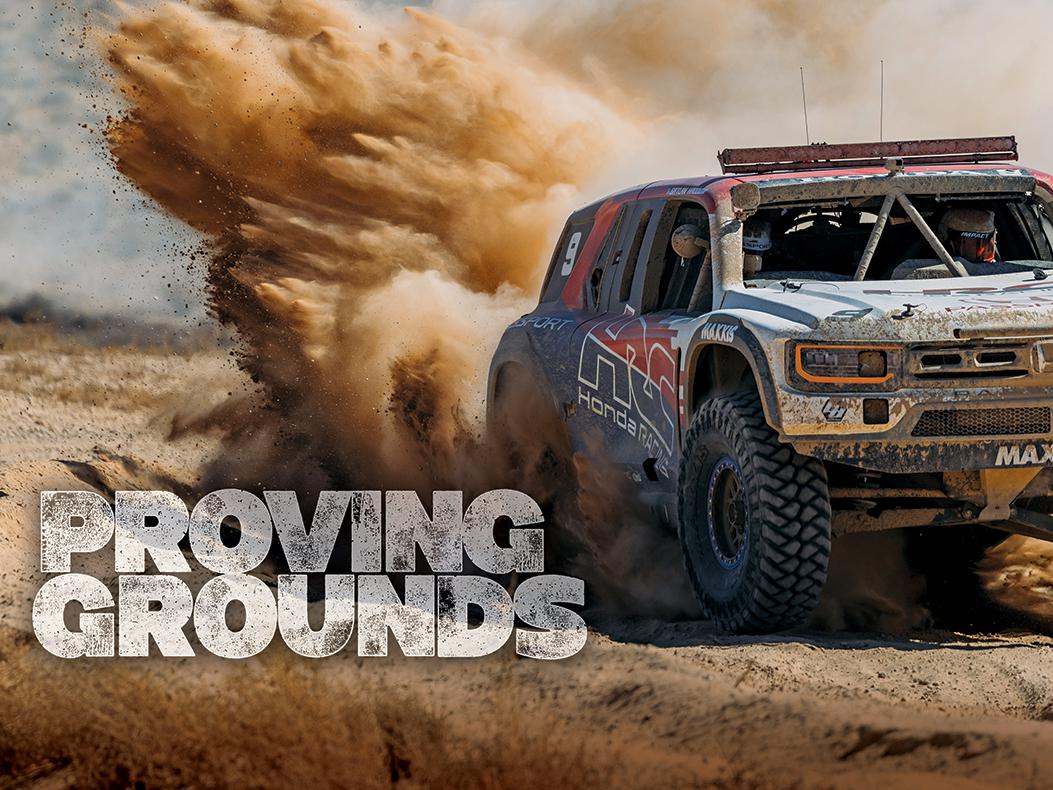Drag vs. Downforce
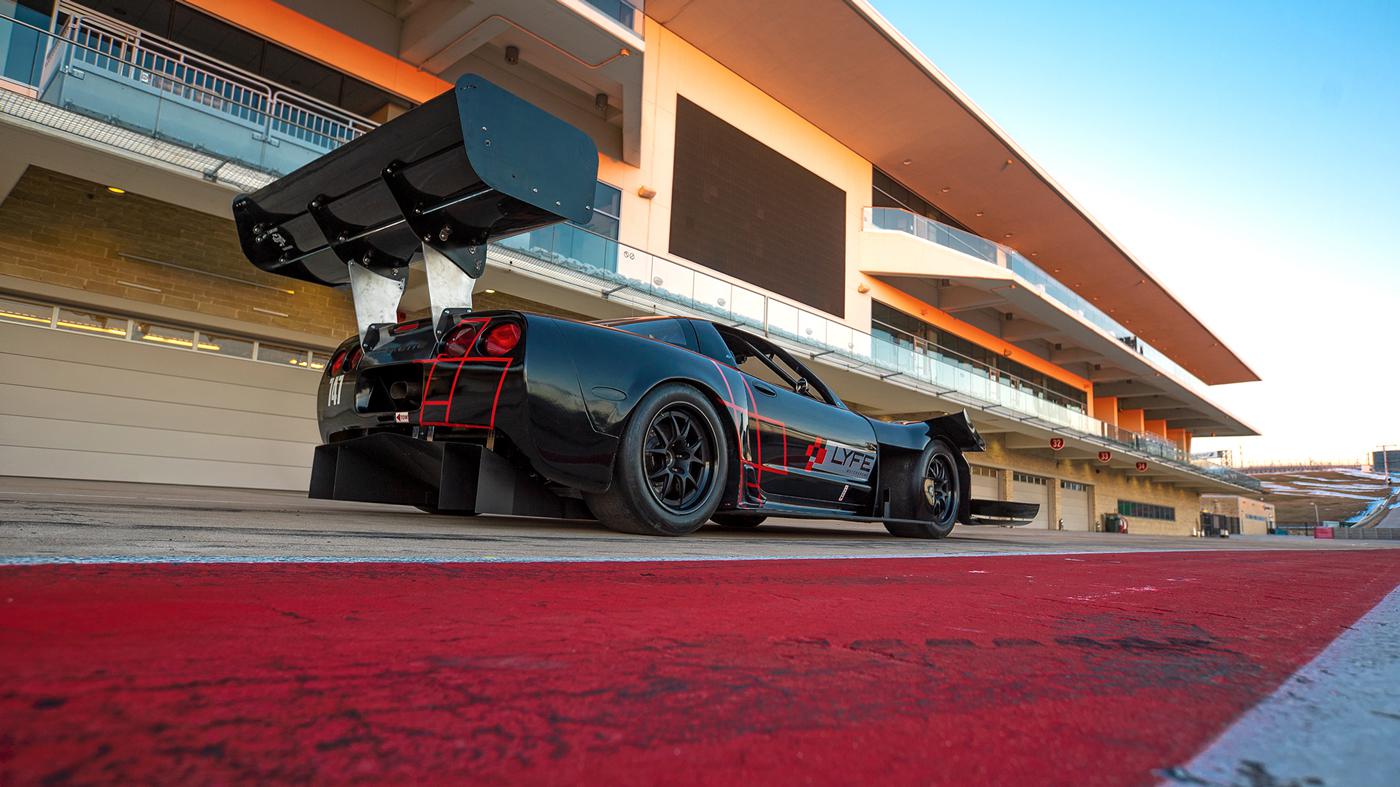
As in so many motorsports, aerodynamic trends are trickling down from the highest professional tiers to the grassroots, but none more so than in road racing.
“Everybody knows the reason Formula 1 cars are so fast is because of their aerodynamics,” observed Paul Lucas of Verus Engineering, Indianapolis, Indiana. “Aerodynamics is a huge part of those teams. It’s the foundation of the cars. If you don’t get the aerodynamics right, you’re not going to be a top-level car that year.”
Road race drivers—and by extension racers in time attack, at Pikes Peak, and in other road-course events—tend to be Formula 1 fans, Lucas said, which exposes them to wind-cheating principles they can explore and modify for their own cars.
“A lot of times, they know the aero makes them faster, but they don’t know why, and they don’t know what kind of aero,” said Lucas. “That’s what drives them to us to get a better understanding of what they need and how to go faster with it.”
“The most challenging part of aerodynamics is not building the aero, but getting the car to work around it,” said Cole Powelson of LYFE Motorsport, Salt Lake City, Utah. “You have your car on aero and your car off aero. At low speeds, say below 60 mph, you have a pretty generic car, but beyond that your car is changing exponentially as the speeds increase.”
When the LYFE Motorsport crew sorted out the aero on its time attack Nissan GT-R, “it was worth four seconds around a standard 2–2.5-mile road course circuit. We bolted on four seconds with the same power level, and that was pretty true to every circuit we went to after that.”
Given the potential for lap time improvements, it’s no wonder road racers at every level are seeking the ideal aerodynamic profile for their cars.
Trends in Development
Getting to that ideal profile seems to be going in two directions. One takes advantage of increases in computing power.
“We do a lot of CFD [computational fluid dynamics] work which, when we started, was pretty rare in our industry,” Lucas said. “I wouldn’t say it’s rare now. There are quite a few companies that offer services similar to what we do. A lot of that comes from the fact that computers have gotten significantly more powerful. A computer that an average person can buy today can run a full car analysis in CFD. Ten to 15 years ago that wasn’t the case. You would need servers and things like that. We use servers so we can turn around things quicker, but you can get it done with your average gaming PC today. That’s a big driving factor of moving that kind of technology more into the mainstream.”
“In an age where information is more readily available, we’re starting to see more trickle down from the motorsports side,” said Kelvin Yong of Evasive Motorsports, Cerritos, California. “3D printing and accessibility to CAD and modeling type software is much easier now. You see it more in the DIY track day side. People are starting to experiment more with things they might see on an LMP or GT3 car, trying to emulate that and see if it works.”
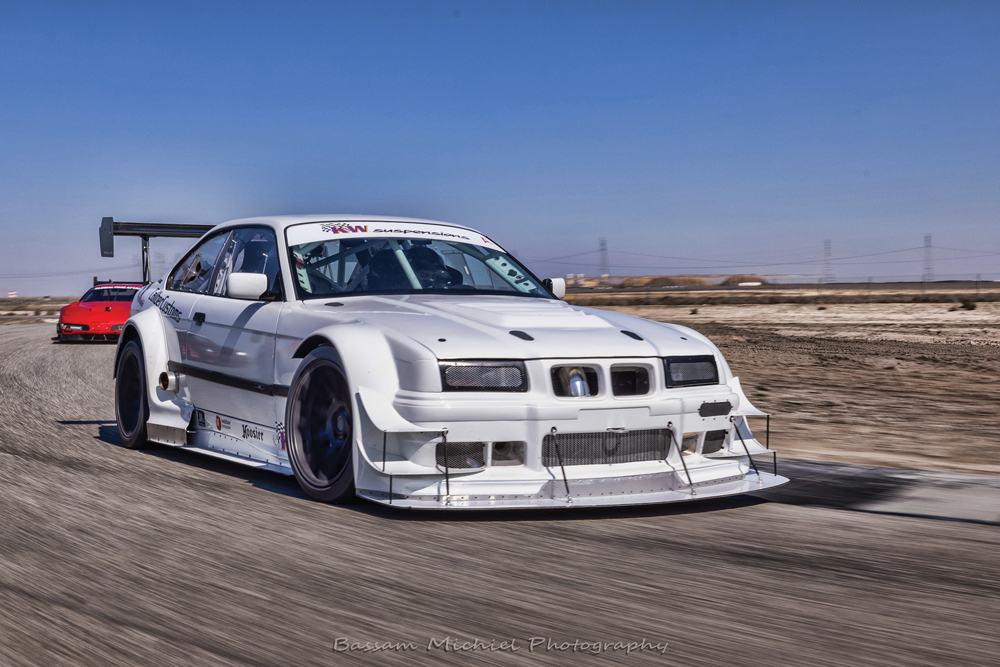
“The state-of-the-art processes that we incorporate in our R&D, manufacturing, and prototyping processes—we have a three-axis and five-axis CNC—allow us to create different types of molds or mill out different types of molds to make more complex shapes possible, rather than just a generic airfoil shape or generic splitter shape,” explained Caleb Sok of Sayber Design, South El Monte, California. “We can get pretty clever with the five-axis, and we do basic CFD on the CAD program.”
At the “higher, higher end” of the competition hierarchy, machine learning will become more commonplace, Lucas said. “CFD creates a lot of data, and machine learning is great at taking a lot of data and making sense of it. It’s a lot more difficult for humans to do that. We’re really good at coming up with creative solutions, but looking at large chunks of data and coming to a conclusion is much more difficult for the human. Machine learning takes that on, simplifies it, and figures out those kinds of things better. I’m not sure when that will come, if that’s five, 10, 15 years down the road, but machine learning will be there.”
The second approach to aerodynamic design is less computer-centric. “Nothing beats trying it on the track,” Sok said. “When we were testing different airfoils on my Supra, we took all the airfoils to Buttonwillow [Raceway Park], set up our front splitter and our rear wing, went out and did two hot laps, came in, switched the airfoil, and did two more laps to see what the times were and how the car was doing. This way I can confidently tell our customers, ‘This is what I experienced, and this is what I would recommend for what you’re trying to do.’ You can do all the computer testing that you want, but especially if the customer has the same car, they feel like they can trust me.”
“We don’t really use CFD,” said Matthew Lambrecht of Caliber Customs, Madera, California. “We do have our own CNC table, and we design 2D parts on that, like uprights for a wing or even canards. We’re not experts when you compare us to higher levels of racing, but we understand the basic principles of how these parts are supposed to work, how the canards are supposed to create turbulence along the side of the car in order to prevent spill over to the underbelly, for example. We visualize how it should work, put them on there, hope they work, and go out and test them. If it works, awesome. If not, we start making adjustments.”
Bestsellers
At Verus Engineering, which sells both fully custom and off-the-shelf aero pieces, “the biggest thing for us is rear wings,” said Lucas. “The bang-for-the-buck is really there. Some other products may be fairly reasonably priced, but the average person might not feel the benefit immediately. A rear wing is a huge one that you immediately feel. It can immediately make you faster on track. Some racers, especially amateurs, like a little bit more rear bias on the aero balance, and the rear wing gives them that. A lot of people really like the way they look, so that’s an added benefit.”
Evasive Motorsports, the US distributor for Japan’s Voltex aero components, sells “a fair number of wide-body kits, some full aero kits for the Honda S2000 and Toyota FRS, but the wing is still the top seller,” said Yong. In his experience, a lot of customers will “throw a wing on and then come back to us and say, ‘We need better balance.’ Aerodynamic balance is more than just the wing, no matter what car you’re driving. A lot of people will start with a wing and end up asking for more: a front splitter, canards. If they decide they want to go really deep, they’ll go for the whole package of fenders, underbody, hood, things like that.”
(Widebody fenders are more about tire fitment than aerodynamics, Yong reported. “The S2000 is really small, so fitting a 280- or 300-width tire is going to be really hard” without them.)
Sayber Design, which concentrates on Toyota GR Supra and GR86 models, offers “a general aero package—front splitter, rear wing—mainly for club level, time attack, track days, local challenges,” said Sok. “That’s what clients usually look for when they start seriously tracking and want more downforce.”
At last year’s SEMA Show, Sayber Design introduced a “full aero widebody kit for the GR86,” Sok said. “Because we knew the GR86 is a lightweight car with not too much power from the factory, we developed an entirely new, ultra-low drag package for it. We knew the client was taking it to Global Time Attack, and we didn’t want to add a giant wing that had a lot of drag to slow the car down. So we developed a new, ultra-low-drag airfoil profile, paired with a splitter to balance out the rearend.”
“You have to do the whole package to optimize the whole aero,” Lambrecht said. “If you add just the rear wing, you’re going to get some downforce, but you’re only going to get it in the rear, and you’re going to create lift in the front from the teeter-totter factor.”
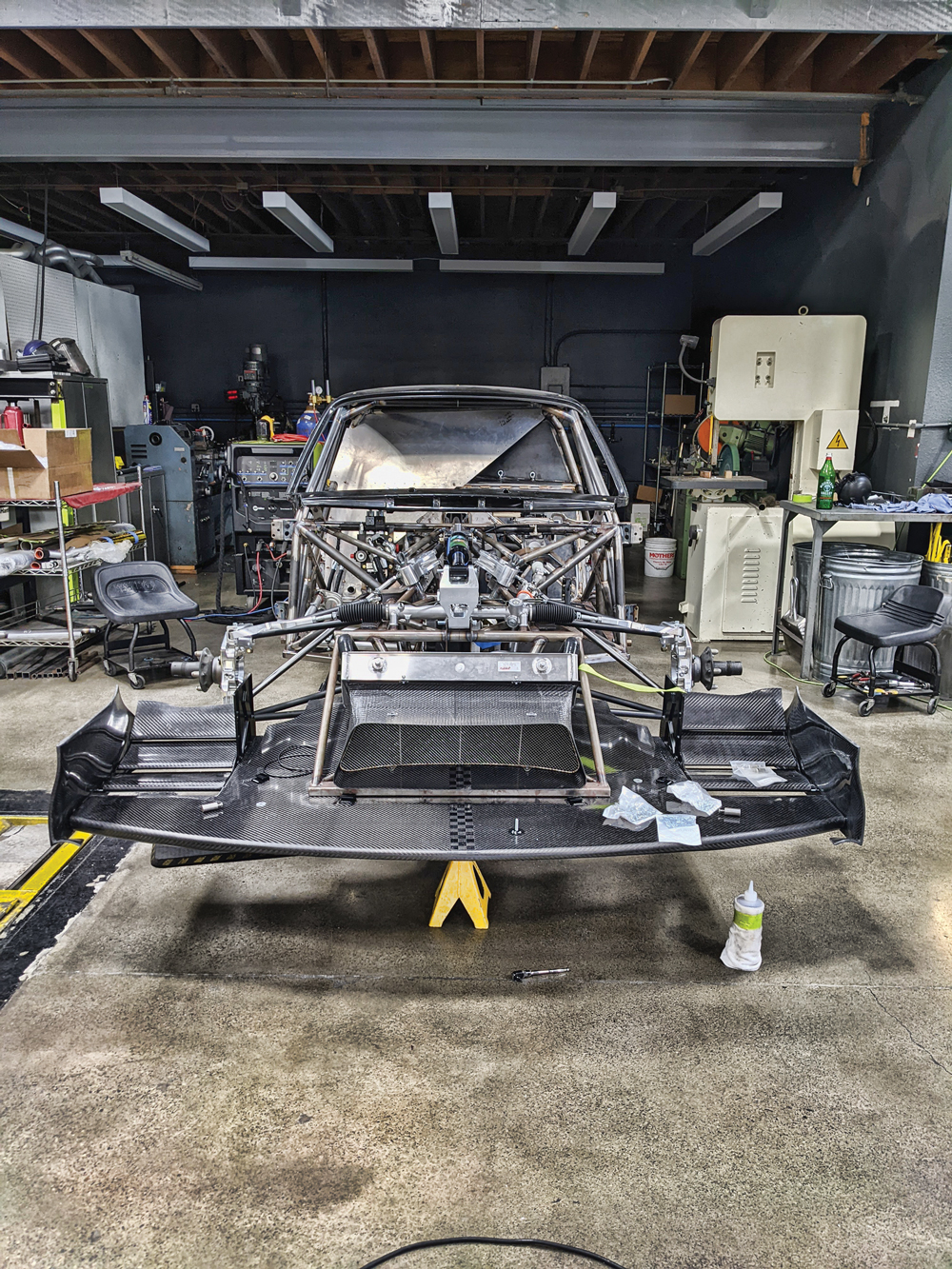
Lambrecht recalled a twin-turbo Corvette Caliber Customs built for a customer, with “nothing extravagant as far as aero goes, just a basic AJ Hartman front splitter with our underbelly and an AJ Hartman rear diffuser and wing. We were able to maintain low speed on the Riverside turn at Buttonwillow of 118 mph. That is not a super light car—it’s 3,100 pounds—and I’ve never seen anyone maintain that as a low speed around that turn. It’s not necessarily about having massive aero, it’s more about getting something that’s all going to work together.”
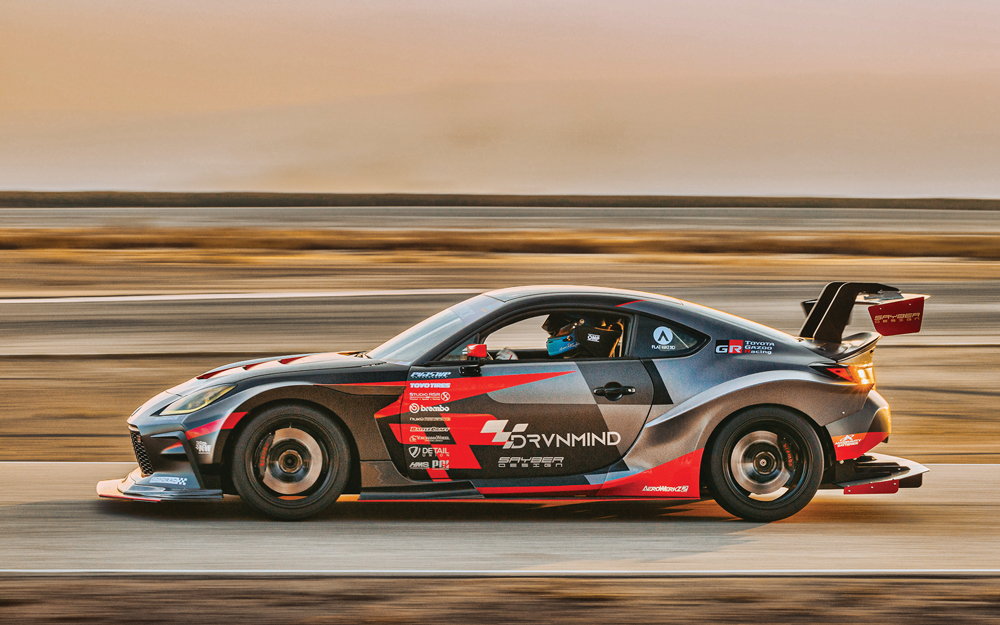
Where you will see “huge aero” is at Pikes Peak, Lambrecht said. For racing there, the aerodynamics “are designed more for the top of the hill at 14,000 feet. The air is so much thinner up there, you need that big aero. Normal size aero just isn’t going to get the job done at that elevation. At the bottom of the hill they probably have too much drag to be optimal. But it’s a balancing act, drag versus downforce. The car would probably be faster with less downforce, but they have to compromise so it still has something going on at the top of the hill.”
Splitter Evolution
“Minus the rear wing, 80% of the total downforce of the car is dictated by what happens at the nose,” Powelson said. “Air coming across the front of the car is clean air, it’s predictable. You now have just raw air you’re shoving through the car to perform different functions and go different places. So controlling the clean air at the front—so critical to the total downforce of the car and the aero efficiency—is a big priority for us.”
One of the “coolest innovations” he’s seen in the past few years “is called an infinity wing. It takes a traditional front splitter with end plates on it and makes the splitter a dual element, to where you have a wing element above your splitter with an air gap underneath. That can achieve similar downforce levels with less drag.”
“In motorsports and the racing team space, everyone knows you want a splitter with a diffuser to optimize front-end downforce,” explained Sok. “In the time attack space, I’ve seen a lot of customers looking for splitters with diffusers incorporated into them. And I’m seeing more and more regular, club-level customers looking for those diffusers.”
But, he added, it can be challenging to incorporate a splitter with a diffuser into a factory car. “A lot of these cars are turbocharged, which means they have a lot of coolers up front. Those extra coolers tend to block any free real estate we might have to incorporate a diffuser.”
Several years ago, Lambrecht was experimenting with the design of the front splitter/diffuser on his 2004 Cobra. “I changed the design to where the diffuser had a curvature to it as opposed to having just a flat angle to further minimize the [air] delamination. That’s when I was running a street class in Global Time Attack with a 200-treadwear, 285-width tire. I maxed it out with the splitter, underbelly, diffuser, and not a wing but just a rear spoiler. At the next event I ended up going three seconds faster. How much of that was aero related I couldn’t tell you for sure, but it definitely went faster after doing that adjustment to the car.”
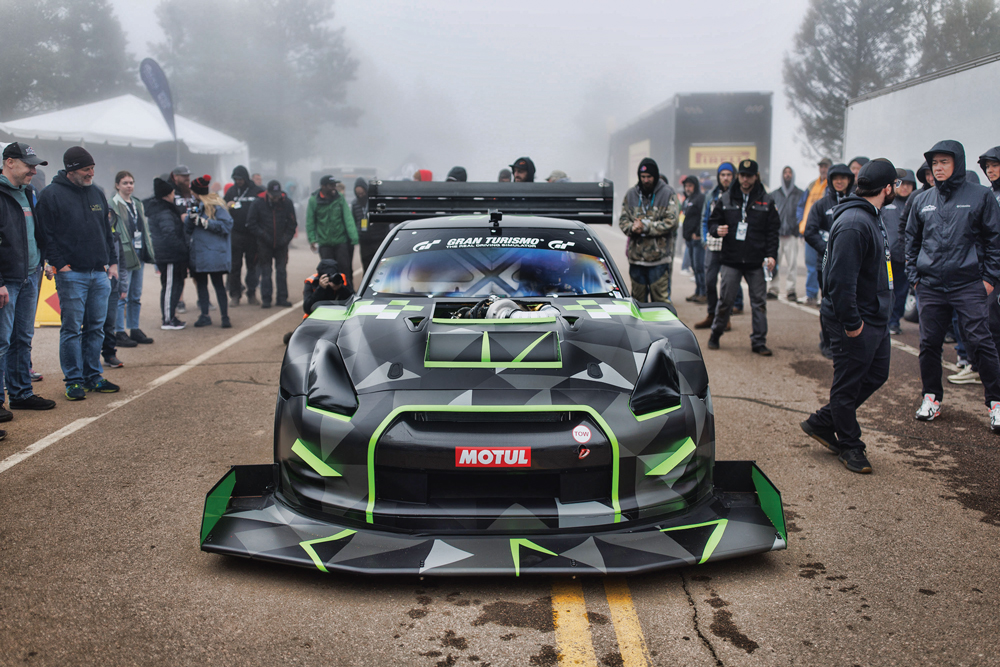
In addition to getting the splitter design right, another challenge is properly making and mounting it. “Some of these cars can do 180 mph, so it’s not uncommon to have a front splitter making 2,000 pounds of downforce at speed,” said Lucas. “You’re talking about basically hanging half a car off the end of a splitter, so you need to be able to make that strong, and the mounting provision is very, very critical.”
Common materials for building a front splitter range from plywood at the DIY end to fiberglass, Alumalite, and carbon fiber. After a wreck Powelson had at Pikes Peak caused by a broken splitter, LYFE Motorsport now builds the GT-R’s splitter from carbon fiber with steel tubing inside of it. “I was stuck between two things: trying to make it light as possible, but we’re also going to ram this 3,500-pound car into the ground repeatedly for a week on this hill climb. It’s nice to have it light weight, but I am erring on the side of strength.”
The Belly of the Beast
Underbelly pans are a “big thing” for Caliber Customs, Lambrecht said. “We build full flat floors so we can optimize the operation of diffusers and splitters. When we get everything to work together, getting the diffuser to feed up toward the rear wing, to evacuate the air underneath the car, that really does tie everything together.”
All of the flat floors Caliber Customs builds are “custom designed from scratch,” Lambrecht explained. “We start off by figuring out the rake of car. We want to have a certain amount of rake front to rear, as that helps with creating the downforce. Once we do that, we have to take into account control arms, transaxles, differentials. We ideally want to hit a certain rake to create the maximum downforce without having delamination of the airflow, but sometimes we can’t hit that without having obstructions, like a transaxle or a differential. Then you have to take into account whether the trade-off is worth it. Do we want to hit that optimum rake angle, or are we going to lower it down a little bit to prevent turbulence and delamination?”
Like Lambrecht, Powelson sees ride height and rake as among “the biggest changes we can make aerodynamically. You can tweak the little wing elements, remove little elements here and there, but ride height and rake dramatically change the performance of the car on a well-done system. If you want to change the center of pressure, if you want to change total downforce and total drag, there’s way more adjustment in ride height and rake than there is in just trimming out a single wing element on the rear wing.”
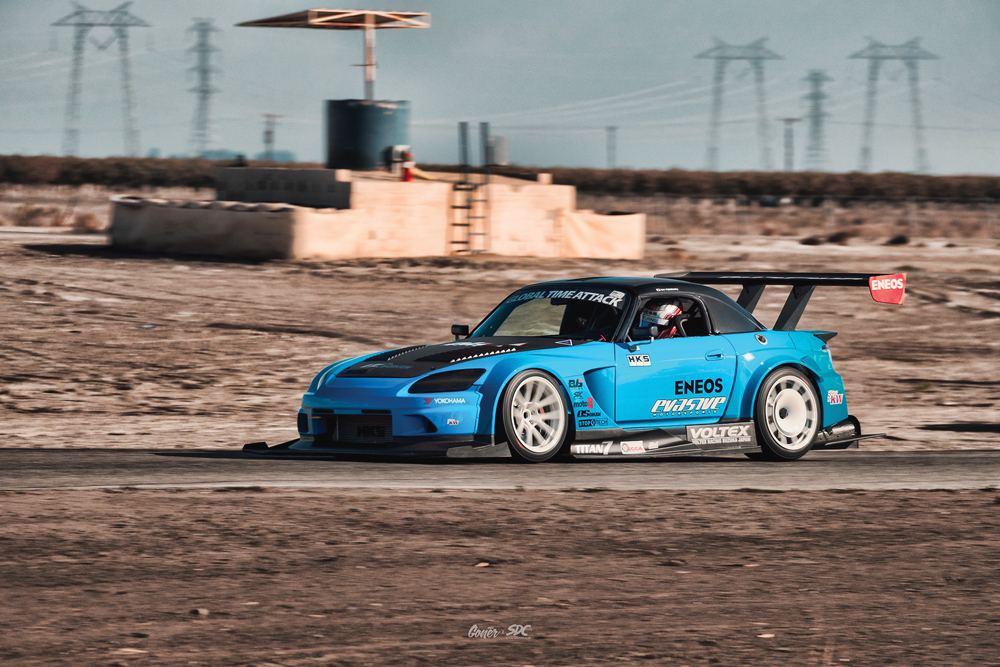
A flat floor “can add a lot of complications,” Lambrecht admitted. “In time attack it isn’t as bad because we’re trying to do just one lap, but we do this setup on endurance cars as well, and it’s a matter of figuring out heat management. We can’t have any stagnant air around hot parts, because it will just expand until it starts damaging stuff.” One solution he has found is adding NACA ducts to the floor “to keep the airflow moving.”
Aerodynamics and Engine Power
The general trend to more power in race cars is “good and bad” in its effect on aerodynamics, Yong said. “When you have a ton of power you can get a little bit lazy. Drag isn’t as big of a deal; you can power through it. With 1,200 horsepower drag doesn’t matter. The trick is to get the right amount of power and downforce, rather than just sledgehammering your way to the podium with 2,000 horsepower and 3,000 pounds of downforce. The challenge is getting a very efficient package, where power and grip are all in the right window.”
As an example of that, in November 2022, Evasive Motorsports set the Honda S2000 record at Buttonwillow (a 1:41.20 lap with Dai Yoshihara at the wheel) using a Voltex time attack aero package. “That kit is made specifically for racing only,” said Evasive’s Tony Kwan. “You can’t drive it on the street because it produces so much downforce. It has a big wing, big splitter, and a complete flat underbelly.” Initial tests with the kit were done when the S2000 was producing “around 400” horsepower, Kwan said, “and it was almost too much downforce for the car.” A new turbocharger setup raised power to 640, and now “the power is actually utilizing the downforce, working in tandem. It’s more balanced now and it’s working great.”
Higher power levels require additional cooling, and the right aero can help there, too. “Aerodynamics plays a big part in heat management, not just downforce,” Lambrecht said. At Caliber Customs, “we often box in radiators so any air that enters the grille has to go through the radiator. We also make extractor vents. As soon as the engine bay becomes a high-pressure zone, it doesn’t matter how big your grille is—if you can’t extract the air from the engine bay, it’s not going to let any more air in. Adding something simple like a Gurney flap at the leading edge of the vent has a profound effect on the amount of air you’re able to pass through the radiator, intercooler, oil cooler, and parts like that.”
A Matter of Balance
“Aerodynamic balance is key to making people go faster,” said Lucas. “If you get the aerodynamic balance off, it either makes the car push, or you can have a driver who is very uncomfortable in the car because the back end wants to step out. You need to be able to level the kit out, so it’s balanced for who is going to drive the car. That’s where a lot of our custom work will come in—fine-tuning the higher downforce kit specifically for that end user.”
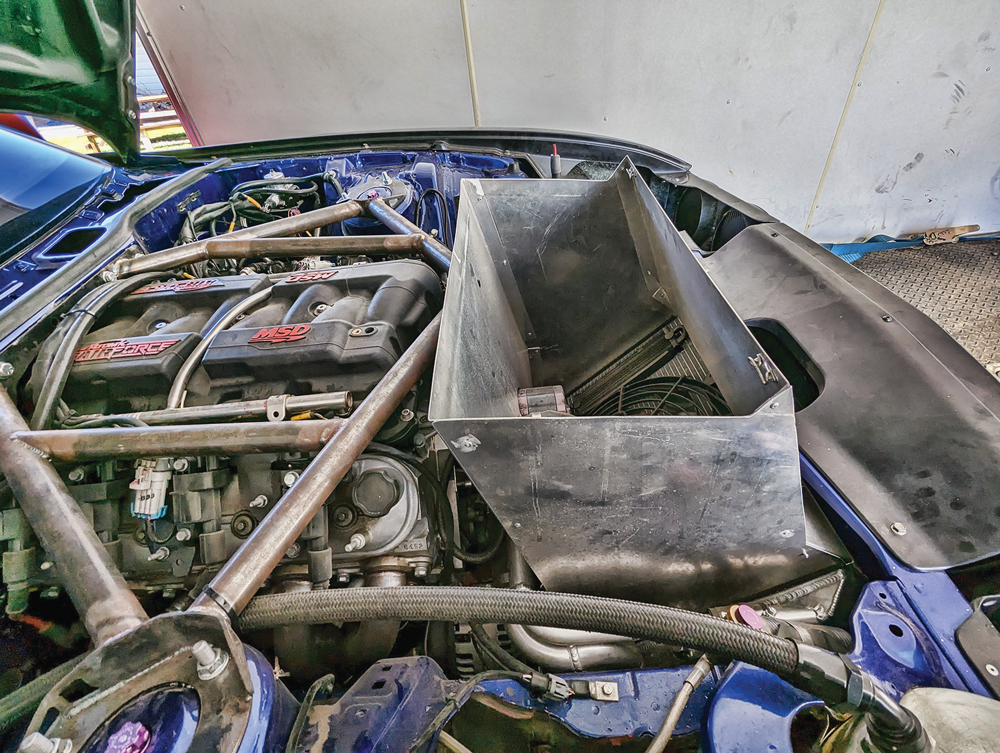
“My biggest piece of advice for people who want to do serious aerodynamic development is get with an engineer or aerodynamicist and have something professionally designed,” said Powelson. “It is the best money we’ve spent on our program. Do it once for your car and your configuration, and it’s the gift that keeps on giving. But it has to be specific to your car, your tire, your track width. Everything is so critical for the entire aero package to work together.”
SOURCES
Caliber Customs
calibercustoms.com
Evasive Motorsports
evasivemotorsports.com
LYFE Motorsport
lyfemotorsport.com
Sayber Design
sayberdesign.com
Verus Engineering
verus-engineering.com
 MEMBERSHIP LOGIN
MEMBERSHIP LOGIN JOIN PRI
JOIN PRI
